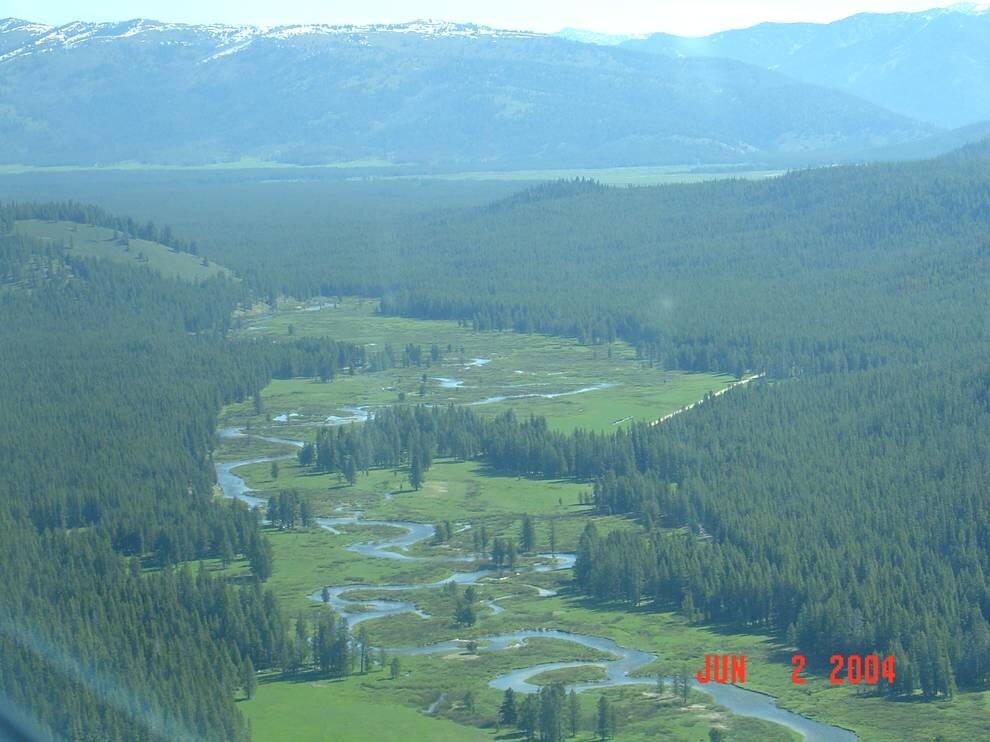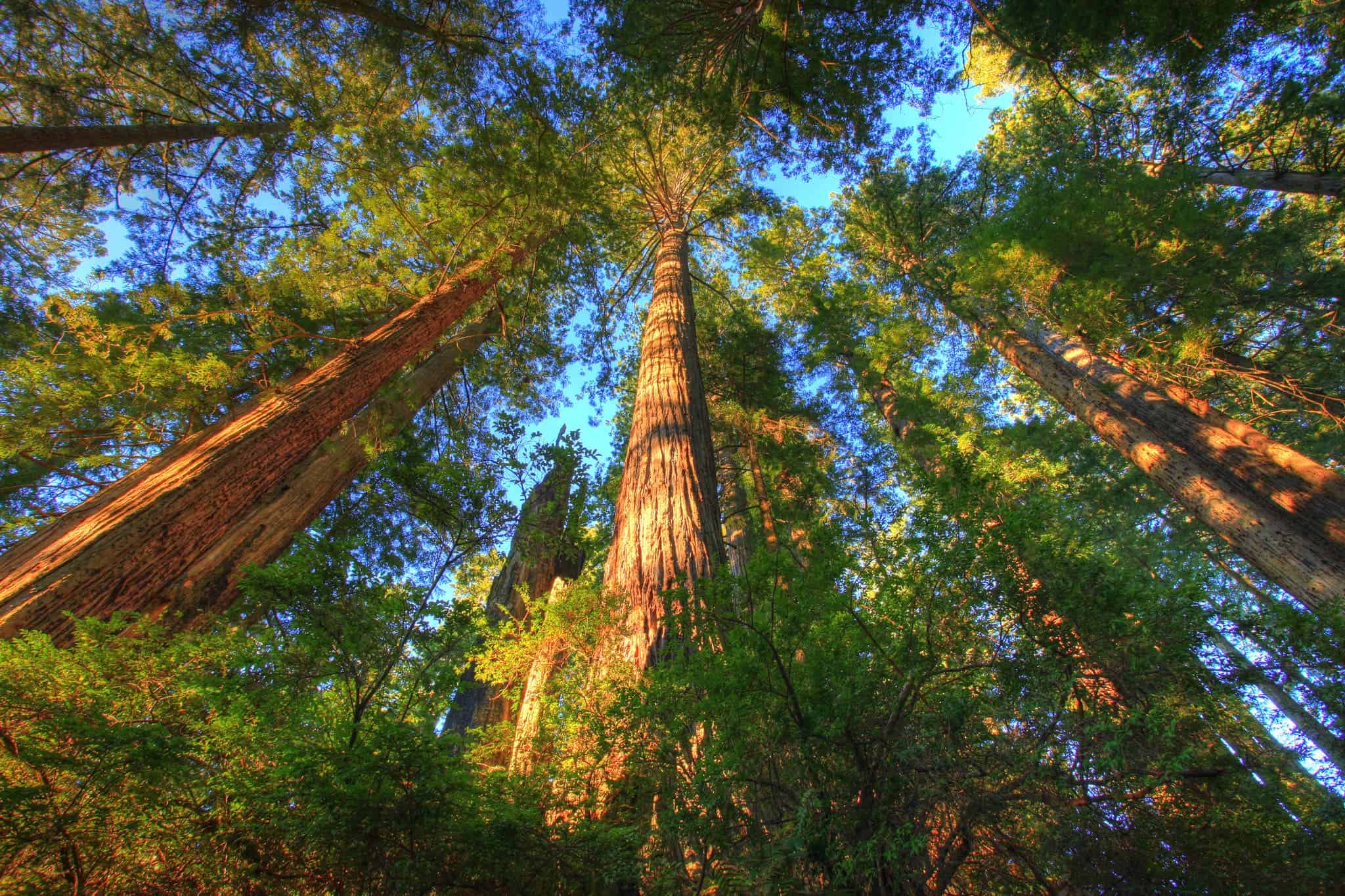Bear Valley Creek is a tributary of Idaho’s aptly named Salmon River. With its lazy meanderings, rushing waters and limited human impact, “it’s as good as it gets for the salmon,” Crozier said. Its salmon population has been robust, but even here climate change is beginning to affect chinook habitat. Credit: James A. McKean
Salmon travel hundreds of miles upstream to reach their home waters to spawn, but climate change is narrowing their destination. A new study offers high-resolution details of how chinook salmon habitats are being lost on Bear Valley Creek, a headwater stream of the Salmon River in central Idaho.
The study, published today in the journal AGU Geophysical Research Letters, suggests that declining water volumes and warming temperatures significantly reduce spawning and nursery grounds for culturally and economically important fish. Researchers predict that salmon here could lose nearly half of their total habitat in this river as early as 2040 due to an estimated 50% decrease in river flow.
Daniele Tonina, lead author of the new study and a professor of ecohydraulics at the University of Idaho, and his colleagues examined a 14-kilometer stretch of Bear Valley Creek known to support a robust population of Chinook salmon. With a wide valley, meandering main river and pleasant side streams, the site is representative of ideal salmon habitats in the Pacific Northwest.
The team mapped the river’s channels and floodplain using a kind of 3D remote laser scanning, or LiDAR, which uses green wavelength lasers to see into shallow aquatic environments. . They then used 60 years of historical stream flow data, from 1957 to 2016, from stream gauges at eight nearby rivers to calculate trends in annual summer flow, a critical period for fish survival. Using three different hydrological models to combine river characteristics and projected flow to 2090, they estimated changes in salmon habitat in the past and in the coming decades.
During the historical study period, summer flow volume fell 19% and slowed 17%. This means less overall area suitable for salmon nests and a loss of off-channel refuges for fry, as side streams are cut off from the main channel. About 20% of this critical off-channel habitat has already been lost over the 60-year period, according to the study. Salmon also lost 23% of their spawning habitat.
“It really allowed us to understand how the environment will change at different releases, which hasn’t really been done before. Now we can say the impact will be that the habitat becomes smaller and more fragmented, which which means even the parts that are still good [quality] might be too small to be useful,” Tonina said. “Yet it is a glass half full, half empty. At least it’s not a total loss of habitat yet.”
“A huge limitation has been our ability to study the landscape at a scale biologically relevant to salmon,” said Lisa Crozier, a research ecologist at NOAA’s Northwest Fisheries Science Center, who was not involved in the study. “We know the general trend is that low flows are bad for fish, but we don’t know exactly why or which life stages are most affected. But here we can see very specifically that they are losing habitat out of channel and spawning. It’s really useful to know those details.”
Save Salmon Streams
Salmon have stringent requirements for their nests. Each female can use up to six square meters of river bed to lay her eggs; the gravel must be perfect, the water must be cold and choppy, there must be calm side streams for the fry to grow. And of course there has to be enough water flowing in the streams for the salmon to come in the first place. Every requirement is threatened.
Smaller, lower-quality salmon habitats could reduce spawning success and increase hardship for young salmon, which already face a host of human-caused obstacles. More female salmon may compete for shrinking nest sites, and young salmon will also compete for shrinking space and resources. Spawning salmon whose home waters are cut off or completely disappear may expend too much energy searching for a new location and die of exhaustion before laying their eggs.
Studies like this help conservationists and conservationists determine which areas are most likely to remain suitable habitat for salmon and other species, and therefore can be targeted for protection, Tonina said. Other cold-water fish, such as trout and rainbow trout, would be similarly affected. Chinook salmon are a “useful indicator of huge changes in the ecosystem,” Crozier added, but “every species will be affected by these changes. This is uncharted territory.”
“This will inform restoration efforts, helping us select streams that are likely to remain accessible to salmon,” Tonina said. “We want to find the areas that will serve as refuges in the future.”
Up to 85% of historic salmon habitat lost in lower Fraser region
Daniele Tonina et al, Climate change is reducing and fragmenting salmon habitats in a snow-dependent region, Geophysical Research Letters (2022). DOI: 10.1029/2022GL098552
Quote: Climate change is shrinking and fragmenting salmon habitat (2022, June 28) Retrieved June 28, 2022 from https://phys.org/news/2022-06-climate-fragmenting-salmon-habitat.html
This document is subject to copyright. Except for fair use for purposes of private study or research, no part may be reproduced without written permission. The content is provided for information only.



